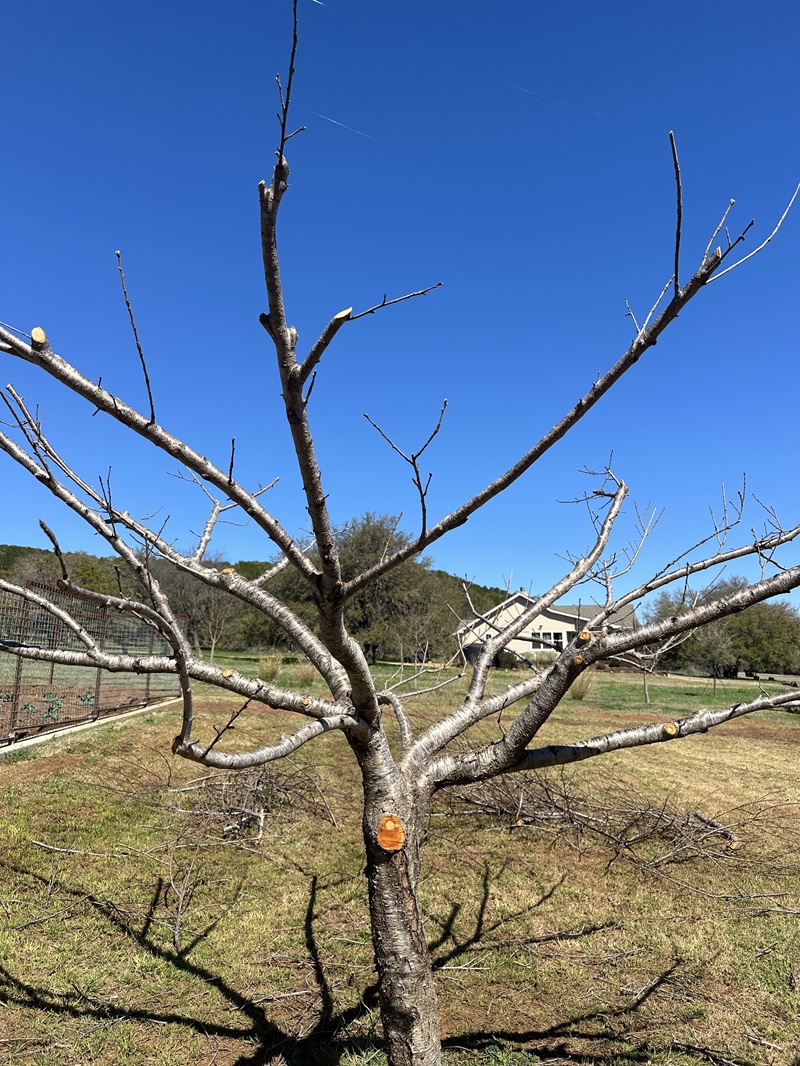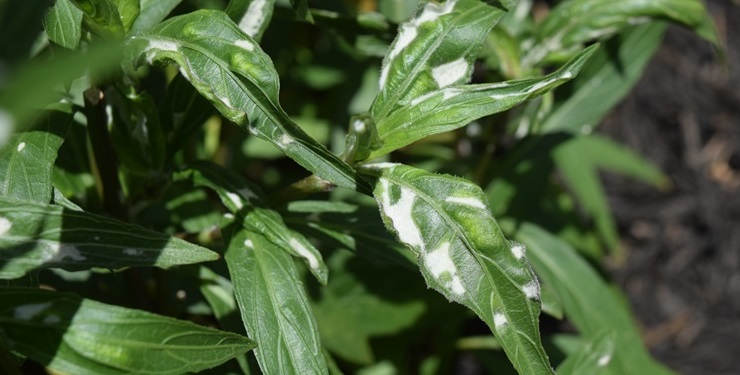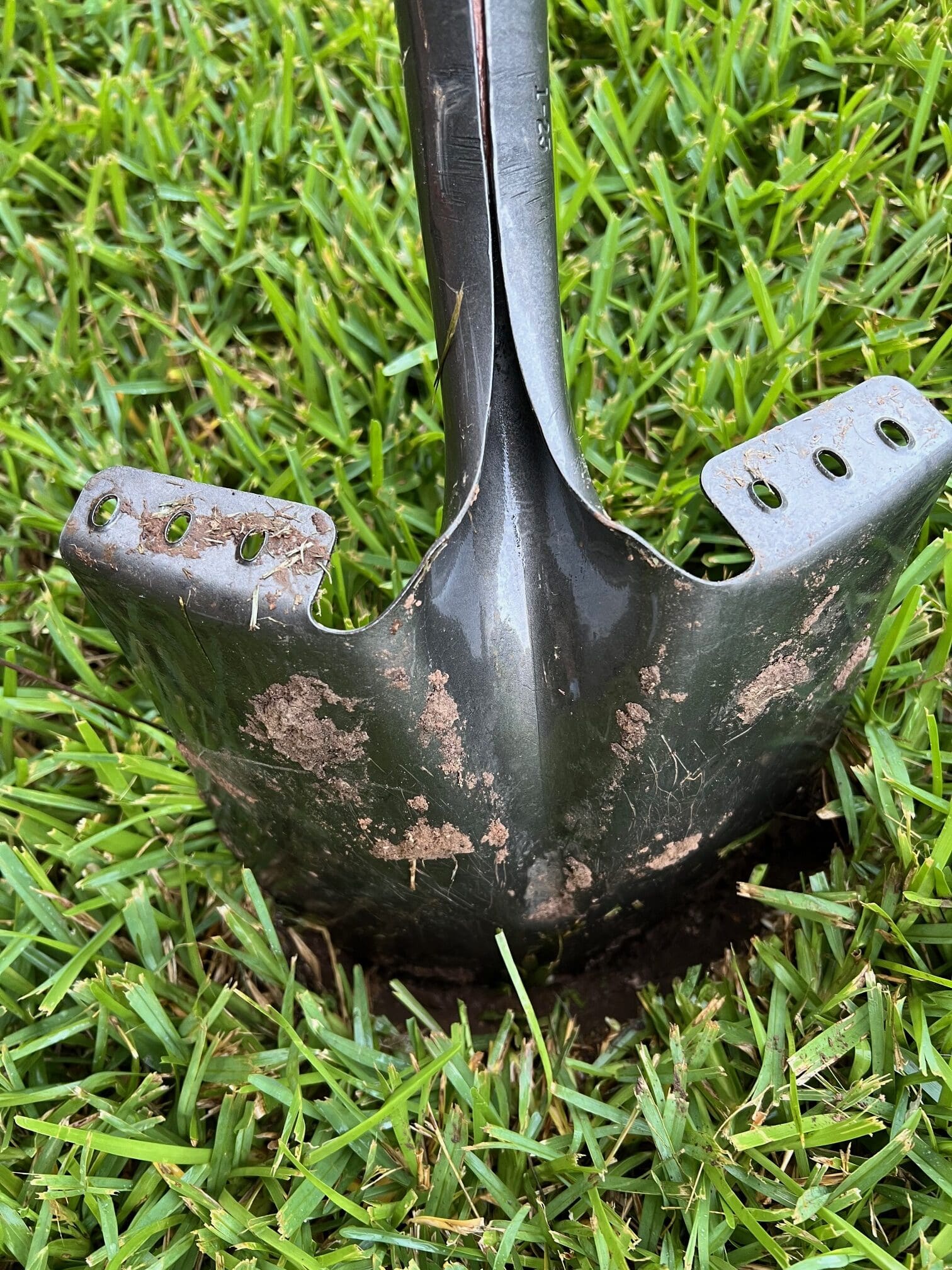Nutrient deficiencies
Iron deficiency is common in areas with calcareous soils and alkaline water. The iron may be present in the soil, but it is in a form that is unavailable to the plant when grown in alkaline conditions. Deficiency occurs on young leaves, and the veins remain green while the rest of the leaf is yellow. This condition can cause dieback of limbs and small fruit. Iron deficiency is also associated with excessively wet soils or prolonged wet conditions, as this depletes the root system and uptake of nutrients is affected. The most effective means of correcting iron deficiency is soil application of iron chelates.
Zinc deficiency is one of the most widespread deficiencies in citrus. Zinc deficiency symptoms are characterized by irregular green bands along the midrib and main veins, while the leaf remains light yellow or almost white. In mild zinc deficiency there might be only small yellow patches between the larger lateral veins. As zinc deficiency progresses, twigs dieback and “water sprouts” form on the main branches and the trunk. Deficiencies of magnesium and copper can also reduce zinc uptake, and excess phosphorous or nitrogen can also induce or aggravate zinc deficiency.
Manganese deficiency may be confused with zinc deficiency as it also leads to a chlorosis between the veins while the veins remain dark green. Young leaves commonly show a fine pattern or network of green veins on a lighter green background. Manganese deficiency may also reduce crop volume and fruit size, but does not usually result in dieback of twigs.
Failure to Fruit
Blooms form but no fruit: Tree may not be old enough. Lemons require 3-5 years before setting fruit. Grafted Dwarf trees will produce sooner. Blossom drop may be caused by over- or under- watering.
Newly formed fruit drops: It is normal for the first fruit set in the spring to fall off in response to a heavy fruit set. Over watering, low nutrient level and exposure to cold are other causes. If your tree is in a saucer, LOSE THE SAUCER!
Excess Nitrogen fertilizer may force out vegetative growth at the expense of flowers. Fertilize in early spring with a Citrus fertilizer high in potassium. Phosphorous will promote blooming.
Fruit Drop
Fruit drop is normal and generally occurs during three time period. The first involves about 70%-80% of the blossoms dropping immediately after flowering without setting fruit. The second occurs when fruits are pea to marble sized, about 2 weeks after setting fruit. The third occurs in late May and involves larger fruit. some trees will continue to drop through harvest. This fruit drop is not preventable.
Leaf Drop
Improper watering is the most common cause of leaf drop in citrus. Water well when you water, allow the soil to dry a few inches down in the pot, then water thoroughly, allowing the excess to drain away. If pot is sitting in a saucer, the water reabsorbed into the soil will rot roots and leaves will drop.
Leaf Problems

Citrus leaves may roll or curl for different reasons. Cold damage and over-watering are fairly common. Insects such as aphids, mites, psyllids and leaf miners will also cause leaves to roll.

Alternaria leaf spot causes yellow leaves with black veins and sunken brown spots with yellow halos on the fruit. Copper fungicide in May or June, then again in July or August is recommended.
Greasy spot fungus appears as yellow spots on the tops of the leaves followed by irregularly shaped brown blisters with a greasy appearance on the top and bottom of the leaf. Copper spray in May or June and again in July or August is recommended.
Brown fruit rot is caused by Phytopthora fungus, and appears on the fruit as small discolored spots, spreading rapidly on the fruit. Prevent infection by increasing air circulation and avoid over-watering or letting pot sit in water. Phytopthora fungus also causes root rot, and can be avoided by having excellent drainage.
Sucker Growth
Suckers may appear above or below the graft union. Both should be carefully removed with sharp pruners. Water sprouts are rapidly growing vertical shoots that often will not bear fruit and should be removed. Suckers growing from below the graft will be thorny and not produce the same fruit as the grafted plant.
Sooty Mold

The appearance of black sooty mold on leaves and stems indicates the presence of sucking insects such as aphids, scale, whitefly or mealybugs. The insects secrete a sugary substance called “honeydew” that the sooty mold grows on. First, control the insects. If the sooty mold is unsightly you may gently wash the leaves with a mild solution of dishwashing liquid.
Insects
Spider mites, aphids, scale, whitefly and mealy bugs may attack citrus plants. Choose the appropriate organic product that is labeled for the insect and citrus application and apply according to label directions. Pay attention to temperature warnings on oil products to avoid phytotoxicity.

Caterpillars may consume leaves of your citrus plant. They start at the outside of the leaf and can strip a small citrus tree fairly fast. The most common one is called an Orange Dog, and it is the larvae of the Giant Swallowtail butterfly. We do not usually recommend controlling these caterpillars as they produce a butterfly that is an important pollinator. “Orange Dog” refers to the orange “horns”, or osmeterium, that the caterpillar displays when startled. The larvae look like “bird poop”, which is likely a defense to protect them from predators. Read more about them HERE




